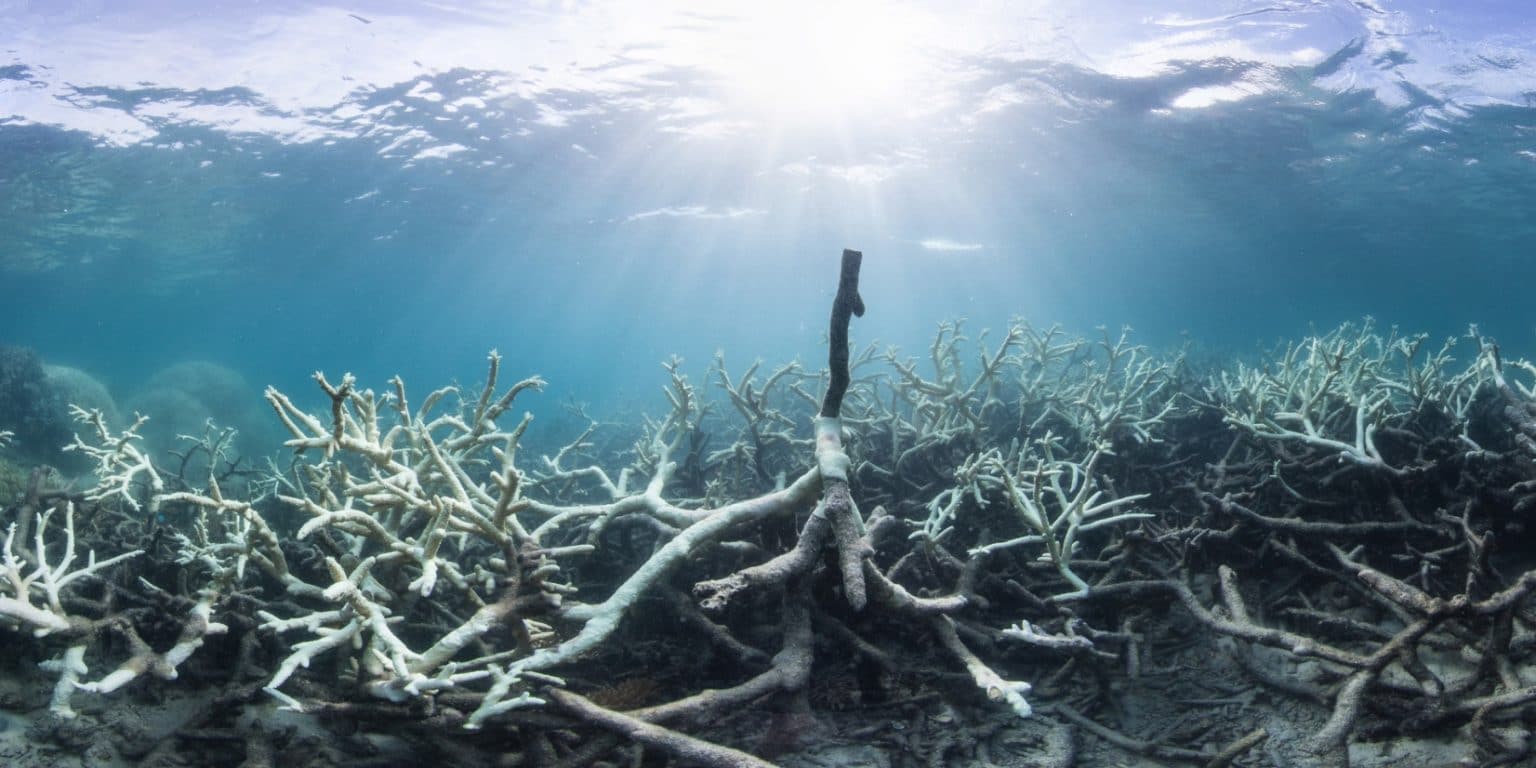The Queensland government’s approach to protecting the Great Barrier Reef seems a bit like that of a hypocritical anti-drugs campaigner who preaches the evils of heroin and cocaine while running a meth lab and bong factory in their basement.
The state’s left-wing Labor Government has been simultaneously regretting the lack of global action to cut greenhouse gas emissions that damage the reef while granting approvals for the biggest coal mine in Australia’s history.
As oxymoronic statements go, some of the political rhetoric coming out of the Australian state of Queensland in recent days takes some beating.
Mining minister Anthony Lynham said the approvals for Indian-owned miner Adani’s Carmichael mine were “tangible evidence” of his government’s “commitment to the sustainable development” of the massive but as-yet-untapped coal reserves in the state’s Galilee Basin.
But as the government was drafting its statements, there was some “tangible evidence” elsewhere of the damage the fossil fuel industry is causing to the state’s iconic reef.
The approvals for Adani’s mine came as large sections of the 2300 kilometre (1430 miles) reef, mainly in the northern sections, were turning white.
Mass bleaching
The reef is currently suffering what is likely to be its worst mass coral-bleaching event since the phenomenon was first reported in 1998 by scientists on reefs around the world.
Bleaching happens when the algae that gives corals their colour and much of their nutrients separates from the white skeleton beneath. Corals do not always die from bleaching, but those that survive can take years to recover and are weakened as a result.
Coral scientists say record-high sea surface temperatures in the Great Barrier Reef region have driven the current bleaching event.
This long-term trend of warming ocean temperatures, mirrored globally, is clearly linked to rising levels of greenhouse gases.
The reef is one of the world’s natural wonders and is home to many thousands of marine species. The marine park covers a huge 344,400 square kilometres (135,000 sq miles) – big enough to cover New Mexico and easily big enough to cover the United Kingdom.
The Queensland Government has been working with the Federal Government to try and reduce other key pressures on the reef, including the amount of nutrient run-off that enters its catchments from farming and developments on the mainland.
But a string of government reports have warned that the key threat to the long-term future of the reef is climate change.
Political oxymorons
Clearly, at least one Queensland Government minister understands the threat. Two weeks ago, as the bleaching event was unfolding but before the true extent was known, environment and reef minister Steven Miles said the bleaching was “heart breaking”.
In a statement Miles criticised the right-wing Liberal Federal Government for failing to have a “credible” policy to cut emissions.
His own state government, he said, was “focused on protecting the reef for the future of our environment” which apparently means approving the country’s biggest coal mine that would dig up and export 60 million tonnes of coal a year.
Expert evidence submitted during a court challenge to the Carmichael mine, estimated that over its 30-year life, the operations of the mine and the burning of the coal would emit 4.7 billion tonnes of CO2e or about 78 million tonnes per year.
Those annual emissions from that one coalmine are equal to the annual carbon footprint of about 16 million cars and are bigger than some entire nations, such as Portugal, Sweden, Bolivia and Syria.
The number of jobs taken up by the Carmichael mine seems to dominate the statements made by Premier Annastascia Palaszczuk and her ministers.
While the mine still has some approvals to gain and court challenges to navigate, as well as an investment decision by Adani, Lynham Tweeted the decision to grant the mining leases meant “thousands of jobs” were a step closer.
In a court challenge in April 2015, it was revealed that publicized claims the mine would generate 10,000 jobs and AU $22 billion in state revenue had been overblown.
Under cross-examination, an expert witness called by miners Adani said the mine would generate only 1,464 jobs and bring in less than AU $5 billion in royalties over the life of the 30-year project.
According to economic research conducted for the Great Barrier Reef Marine Park Authority, the government agency responsible for managing and protecting the reef, the reef itself contributes AU $5.7 billion every year to the Australian economy and provides full-time jobs to 69,000 people.
But regardless of the economics, there’s the cruel irony to consider.
The coal from the planned Adani coal mine would be exported on ships travelling straight through the reef.
Image: Bleached corals at Lizard Island, Great Barrier Reef, pictured during a mass bleaching event in early 2016. Credit: XL Catlin Seaview Survey
Subscribe to our newsletter
Stay up to date with DeSmog news and alerts






